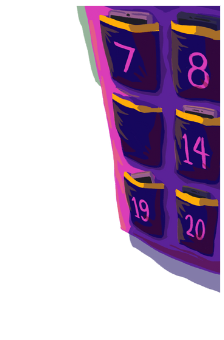Written by Shannon Yang
The Center for Disease Control and Prevention (CDC) and Substance Abuse and Mental Health Services Administration (SAMHSA) have just released their Epi-Aid Investigation report today at 8:30 a.m. The report, which focused on 10-to 24-year-old residents of Santa Clara County, is a product of two years of research and field work. The preliminary report came out in July. The new report’s key findings will include statistics about deaths, emergency department visits, hospital discharges and student surveys, as well as findings about media coverage. In addition, the report will set forth guidelines and recommendations on how to prevent suicide.
Principal Dr. Denise Herrmann hopes to use the report to guide the school’s wellness initiatives moving forward. “I’m looking forward to the power of the data and maybe revealing some things to me and to our school that we weren’t able to see because sometimes you’re just so close to it you don’t recognize it,” she said.
Suicide is a public health issue; according to the report, the City of Palo Alto had 14.1 per 100,000 suicides in 10- to 24-year-olds from 2003-2014—the highest suicide rate for this age group.
The CDC report identified common factors that youth who died by suicide within the scope of their study exhibited. Ninety-two percent of them had some known circumstances that led to the suicide, including a recent crisis, current mental health problem, history of treatment for mental health problems and history of suicidal thoughts or ideation.
The report also included data from student surveys, including the California Healthy Kids Survey and Project Cornerstone, which showed that 15 to 19 percent of students reported suicidal ideation over the past 12 months. An analysis of the data revealed that there were noticeable protective factors, including but not limited to high self-esteem/perception of self, positive relationships with parents/family, positive relationships with school and community, caring relationship with teacher/adult in school, high school connectedness and academic motivation. Conversely, risk factors included drug, tobacco and alcohol use, being the victim or perpetrator of violence, feeling sad or hopeless, having other mental health problems, delinquent behaviors, bullying at school/community and self-identifying as lesbian, gay or bisexual.
These connections are highlighted in the 2015-16 California Healthy Kids Survey, in which 23 percent of Gunn freshmen and 28 percent of Gunn juniors reported chronic sad or hopeless feelings in the past 12 months. Fourteen percent of freshmen and 15 percent of juniors seriously considered attempting suicide in the past 12 months.
Though Herrmann anticipates the CDC Epi-Aid Report to be in the statewide spotlight, she hopes to showcase the positive wellness efforts and investments. “I want to make sure that although we’ve had significant crisis, that people know that we’ve responded in really positive ways to that, and that we are going to continue to do great work here,” she said.
If a student, you or someone you know, is in need of immediate support at school, reach out to a trusted adult, visit the Counseling Office or Wellness Center. If you are in crisis outside of school, the Crisis Text Line is free, 24/7 support for those in crisis. Text “Connect” to 741741 to text with a trained Crisis Counselor.
Check out the rest of the story online at gunnoracle.com











